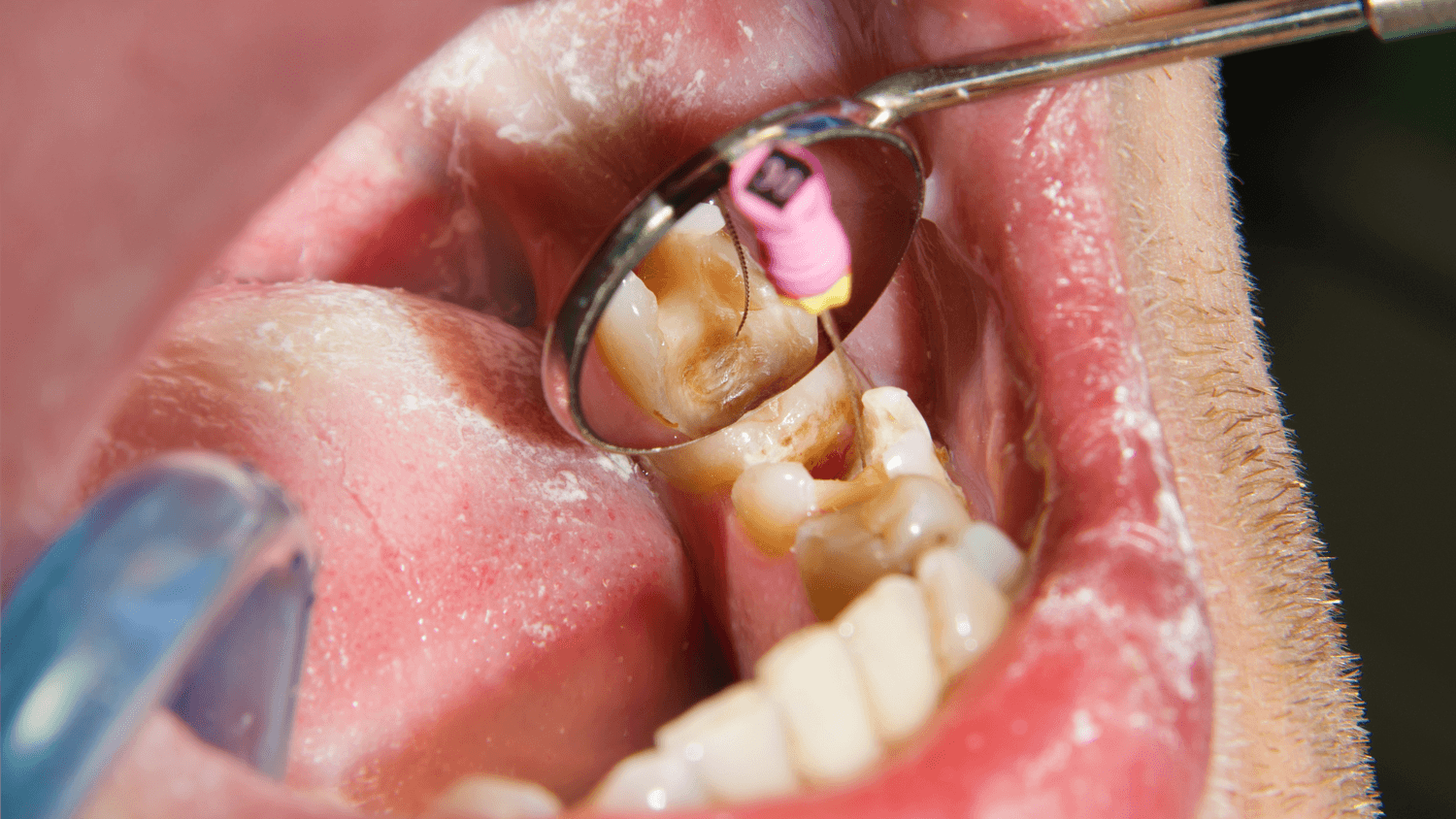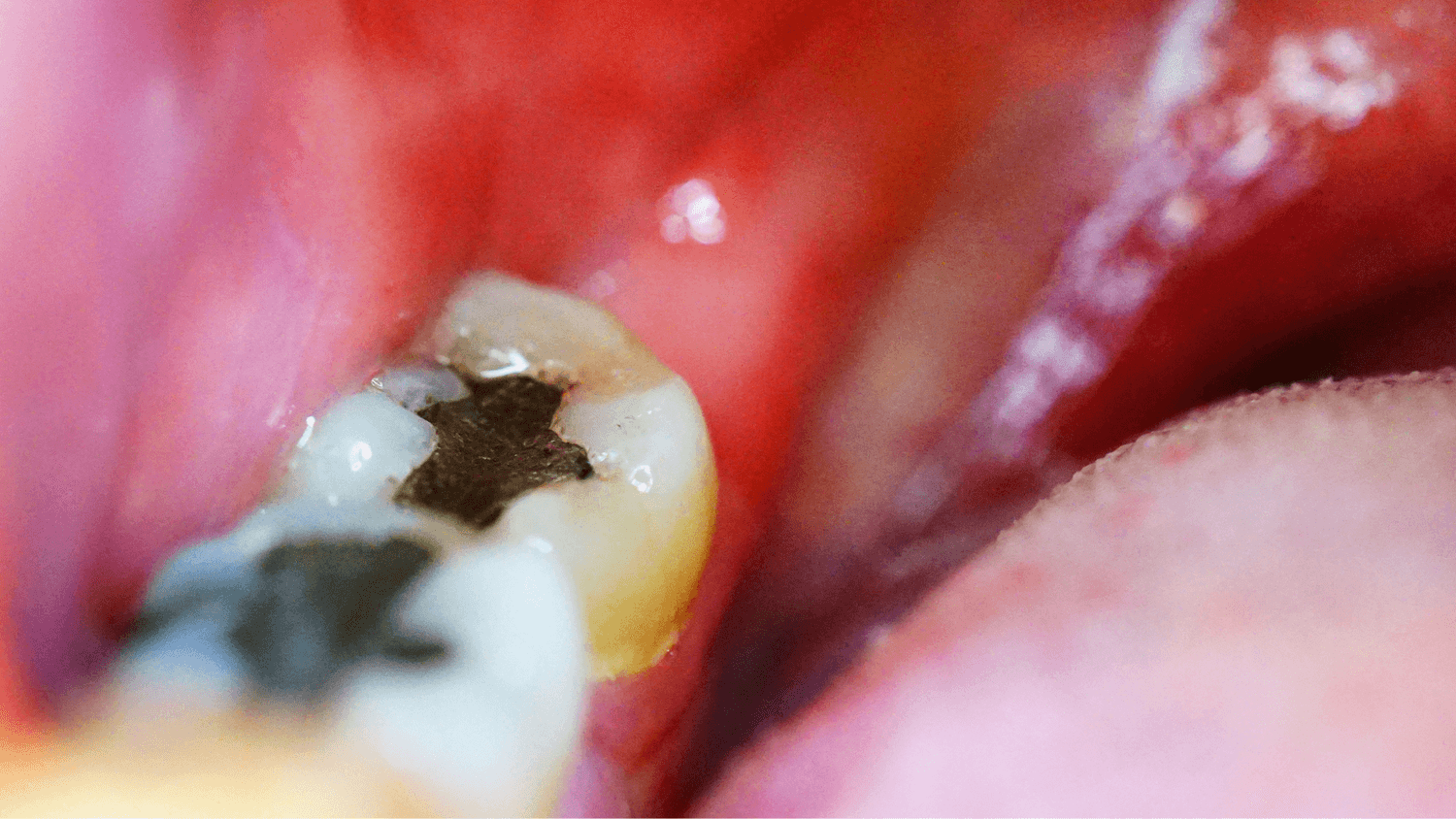The Complete Guide to Teeth Filling: Materials, Benefits, and Aftercare Tips
When it comes to maintaining a healthy smile, teeth filling is one of the most common and effective dental procedures. Whether it's used to repair a cavity or fix damage caused by wear, fillings play a key role in restoring both the look and function of your teeth. Made from materials like composite resin or metal amalgam, each type offers unique benefits depending on your needs.
Understanding proper after-filling care is just as important as the procedure itself, helping to ensure long-term oral health and comfort.
What is a Teeth Filling?
Teeth fillings are one of the most routine dental procedures, helping patients maintain healthy teeth and address tooth decay. A filling works to restore the structure, function, and integrity of a damaged tooth. Whether your dentist recommends a composite teeth filling for its seamless appearance or an amalgam one for durability, fillings are essential in preventing more serious dental problems down the road.
The Purpose of Teeth Fillings
So, why are fillings necessary? Simply put, they stop the progression of tooth decay and restore strength to the affected tooth. Without this treatment, a minor cavity can turn into a major issue, potentially leading to infections, abscesses, or even the need for a crown filling or root canal.
Fillings work by sealing areas of damage, preventing bacteria from spreading deeper into the tooth. They also rebuild the tooth's structural integrity, allowing you to chew and speak without discomfort. Think of a teeth filling as a repair patch, carefully placed to protect your tooth while maintaining long-term oral health.
In essence, fillings do more than just fix appearance—they're one of the first lines of defense in preventing escalating dental problems.
Types of Teeth Filling Materials
Choosing the right material for your filling depends on factors like your budget, the tooth's location, and your desired aesthetics. Dentists have an array of materials to choose from, each offering distinct advantages.
- Composite resin: These are popular for their natural tooth-like appearance. They blend seamlessly with surrounding teeth, making them an excellent choice for visible areas. Plus, they bond chemically to the tooth, offering added reinforcement.
- Amalgam fillings: Made from a mixture of metals, these are incredibly durable and cost-effective. They're often used for molars where strength outweighs aesthetics.
- Ceramic fillings: Porcelain-based, they’re both hardwearing and aesthetically pleasing. While pricier, they resist staining better than composite fillings.
- Gold fillings: Known for their longevity, gold fillings can last 20 years or more with proper care. They’re chosen more for durability than subtlety.
- Glass ionomer fillings: These release fluoride, which can be beneficial for preventing decay. They’re primarily used in areas with minimal chewing pressure.
Composite teeth fillings, in particular, stand out due to their ability to mimic the natural look of tooth enamel. It's no wonder they’re a go-to option for so many patients. However, discussing your needs with your dentist will help determine the best material for your situation.
Each material comes with pros and cons, but what's consistent is their ability to protect and restore your tooth. As with any dental procedure, professional advice ensures you make the most informed decision based on your individual needs.
When is a Teeth Filling Needed?
A teeth filling is a common dental treatment designed to address issues such as cavities, fractures, or damaged surfaces of a tooth. It’s not just about restoring the tooth's appearance; fillings protect your oral health by sealing off vulnerable areas. But how do you know if you need one? Let's break it down.
Signs You May Need a Filling
Your teeth won't always scream for attention when something's wrong, but there are clear warning signs to look out for. Paying attention to these early signals can save you from more invasive treatments like crowns or root canals later.
- Tooth sensitivity: Do you feel a sharp or lingering discomfort when drinking something hot, cold, or sweet? Sensitivity is often an early sign of enamel erosion or decay.
- Visible decay or dark spots: Darkened areas or discoloration on your tooth surface may indicate a cavity starting to form. In some cases, this can escalate if left untreated.
- Small cracks or fractures: Chips or fissures in your teeth weaken their structure and often need repairs before they worsen.
- Food getting stuck in crevices: If food frequently lodges between certain teeth, it could suggest gaps caused by decay that require sealing.
- Persistent toothache: A constant dull ache or sharp pain when biting down shouldn't be ignored—it’s often a red flag for a cavity or structural damage needing attention.

Ignoring these signs can turn what could be a simple composite teeth filling into a more complex procedure down the road. Always take note of what your teeth are trying to tell you.
How Dentists Diagnose the Need for a Filling
Suspect you need a filling? A dentist uses a mix of tools and techniques to confirm the problem before offering treatment. Here’s what you can expect during an appointment:
1. Visual examination: Your dentist will start by inspecting your teeth with a small mirror and dental tools. They’ll look for visible decay, discoloration, worn areas, or cracks.
2. Probing for soft spots: Using a dental instrument, they may gently probe the surface of your teeth to identify soft areas, which often indicate decay that hasn’t reached deeper layers.
3. X-rays: X-rays are a crucial part of diagnosing cavities that aren’t visible to the naked eye. They provide a detailed look at decay between teeth or damage hidden beneath the surface.
4. Cavity-detecting dyes: In some cases, a special dye may be applied to the tooth. This dye sticks to decayed areas, helping your dentist pinpoint the exact problem spots.
This thorough process ensures dentists catch issues early, allowing for quicker and less invasive solutions. If diagnosed in time, a small filling can restore function and prevent further damage, protecting your tooth from future complications.
By understanding these signs and diagnostic methods, you’ll know when it's time to act and seek professional assistance. Remember, an untreated cavity only gets bigger, but a quick filling can safeguard your dental health for years to come
The Teeth Filling Procedure
Understanding the teeth filling procedure can help alleviate any anxiety you might feel before heading to your dentist. This step-by-step process is designed to be as straightforward and painless as possible while restoring your tooth's function and protecting your oral health. Let’s break it down.
Initial Examination and Preparation

Before starting the procedure, your dentist will thoroughly examine the affected tooth to assess the extent of the damage. They may use a dental mirror, probe, or even X-rays to pinpoint areas of decay that aren’t visible to the eye. This diagnostic phase ensures the problem is addressed effectively and no decay is left behind.
Once the examination is complete, the next step is numbing the area. To ensure you’re comfortable, your dentist will apply a local anesthetic. This numbing agent is carefully injected around the tooth to block pain signals, allowing the entire process to be virtually painless.
After numbing, the decayed portion of the tooth is carefully removed. Dentists use precise tools, such as drills or lasers, to clean out the damaged parts while preserving as much healthy tooth structure as possible. This step is crucial as it prepares the tooth for the filling material, ensuring it adheres securely and offers the protection needed.
Placing the Filling Material
Once the tooth is clean and ready, the filling material is applied. The choice of material—whether composite resin, amalgam, or another option—depends on the location of the tooth, your preferences, and your dentist's recommendations.
If you opt for a composite teeth filling, the process becomes slightly more intricate. Composite fillings are applied in layers. Each layer is carefully placed inside the cavity and hardened using a special curing light. This layering technique not only provides strength but also ensures the material mimics the appearance of your natural tooth.
Other filling materials, such as amalgam, are placed in one go and expertly shaped to fit the tooth. With all types of fillings, your dentist works meticulously to ensure the material bonds properly with the tooth. Think of it like patching a cracked wall—there’s a need for precision to prevent any cracks from reappearing or spreading.
Final Adjustments and Polishing
Once the filling is in place, your dentist will perform a series of checks to ensure everything feels right. The goal at this stage is to make sure the filling fits your natural bite. You’ll be asked to bite down on a colored paper strip, leaving marks that reveal any high points or uneven surfaces on the filling.
After this, the filling is adjusted by refining its shape so it aligns perfectly with your teeth. An improperly shaped filling can cause discomfort or pain when biting, which is why this part of the process is so important.
Finally, the filling is polished to perfect the surface. This adds smoothness and helps prevent food or plaque from sticking. A smooth filling ensures comfort while chewing and reduces the chance of irritation to your tongue or gums. The result? A restored tooth that blends seamlessly into your smile and functions just like it should.
Each stage of the procedure is carefully executed, ensuring both practicality and aesthetics are prioritized. With expert hands, you can expect a durable and comfortable filling that protects your tooth for years to come.

Benefits of Teeth Fillings
Teeth fillings are more than just a routine dental treatment—they offer essential benefits that protect your oral health and enhance your daily life. From safeguarding damaged teeth to improving their appearance, fillings play an integral role in maintaining strong, functional, and beautiful teeth. Below, we’ll explore some key advantages of getting a teeth filling.
Protection Against Further Decay
Once tooth decay sets in, it can quickly progress, compromising the structure and health of the tooth. Teeth fillings act as a protective barrier, sealing the damaged area and preventing bacteria from re-entering. By filling the cavity, your dentist essentially shelters the tooth from future attacks.
Think of a filling as a sturdy shield. It seals off the vulnerable areas where harmful bacteria could thrive, preventing the decay from spreading deeper into the tooth or to neighboring ones. Without this intervention, untreated decay can lead to infections, abscesses, or even the need for more costly procedures like a crown filling. A straightforward filling can safeguard your oral health and provide you with peace of mind.
Restoring Normal Function
A damaged or decayed tooth affects more than just your smile—it can make everyday tasks like chewing or speaking a challenge. Teeth fillings restore the tooth’s shape and function, allowing you to eat and speak comfortably again.
After a filling is placed, you’ll notice how much smoother and easier it is to chew without pain or awkwardness. The filling reinforces the tooth’s structure, making it strong enough to handle the pressures of daily use. Just like repairing a broken tool allows it to work as intended, a filling fixes the damage so your tooth can do its job effectively.
Say goodbye to biting with caution or avoiding certain foods. A properly placed filling ensures you can enjoy your meals and conversations without any discomfort.
Improving Aesthetics
For many patients, the thought of dental work brings concerns about appearance. However, modern composite teeth fillings are designed to blend seamlessly with the natural color of your teeth, making them nearly invisible. Unlike silver amalgam fillings, composites offer a discreet, natural-looking solution that enhances your smile's appearance.
One of the biggest advantages of composite fillings is their ability to mimic the translucency and shading of tooth enamel. The material can be sculpted and polished to match your existing teeth, ensuring uniformity. The result? A flawless restoration that doesn’t draw attention to past dental work.
Whether you’re repairing a tooth at the front of your mouth or addressing damage elsewhere, composite fillings provide a confidence boost by enhancing both functionality and aesthetics. You’ll smile freely knowing your teeth look as natural as they feel.
Teeth fillings don’t just fix what’s broken—they preserve your smile, protect your health, and allow you to return to life as usual. Each of these benefits adds up to long-term oral wellness, making fillings a valuable investment in your dental health.
After Filling Care Tips
Taking care of your teeth after getting a filling is essential for both your comfort and the longevity of the dental work. Proper aftercare minimizes sensitivity, maintains the health of the filled tooth, and helps prevent future oral issues. Here’s how you can ensure the best post-filling results.
Managing Post-Filling Sensitivity
It’s common to experience mild sensitivity after a teeth filling, especially to hot, cold, or sweet foods. This is your teeth adjusting to the filling material and should subside within a few days to a couple of weeks. However, there are steps you can take to reduce discomfort:
- Avoid extreme temperatures: Stick to foods that are warm or room temperature. Steer clear of ice-cold beverages and steaming hot meals for a few days.
- Limit sugary foods: Sugary snacks and drinks can irritate sensitive areas and trigger discomfort.
- Chew mindfully: If your filling is on one side, use the opposite side to chew until the sensitivity lessens.
Think of your tooth like a muscle after a workout—it needs time to heal and adapt. If the sensitivity persists or worsens, it’s a good idea to check in with your dentist.
Maintaining Oral Hygiene

Teeth fillings require the same level of care and attention as your natural teeth. Neglecting oral hygiene can lead to further decay around the filling or even under it, so consistency is key:
- Brush regularly: Use a fluoride toothpaste and a soft-bristled toothbrush. Brush twice a day for at least two minutes.
- Floss daily: Food particles can get trapped between filled teeth, increasing the risk of decay. Flossing keeps these spaces clean.
- Consider fluoride mouthwash: This helps strengthen enamel and protects against decay, which is especially important if you’re prone to cavities.
Think of your teeth as a garden—daily attention prevents weeds (cavities) from taking over. Staying diligent with brushing and flossing ensures your teeth remain healthy and your fillings stay intact.
Scheduling Follow-Up Visits
Routine dental checkups are vital for maintaining the integrity of your fillings and overall oral health. Your dentist will examine the condition of the filling, ensuring it fits well and hasn’t worn down or cracked. Regular visits can catch small issues before they become larger problems.
Here’s what to keep in mind about follow-up care:
- See your dentist every six months: Routine cleanings and exams protect your teeth and allow dentists to monitor older fillings.
- Address discomfort early: If you notice rough edges on the filling, persistent sensitivity, or pain, don’t wait for your next checkup—schedule an appointment to get it looked at.
Think of routine dental visits as tune-ups for your car—preventative maintenance keeps everything running smoothly in the long term.
Complications and How to Address Them
While teeth fillings are designed to restore and protect your teeth for years, complications can sometimes arise. Knowing what to watch for and how to address potential issues can save you discomfort and prevent further damage. Let’s explore common complications and how to manage them effectively.
Signs of a Damaged Filling
Recognizing the early symptoms of a damaged filling is critical to maintaining your oral health. Fillings can degrade over time due to daily wear, or they may become compromised from habits such as teeth grinding or chewing hard foods.
Here are some common signs that a filling may need repair or replacement:
- Sharp or sudden pain: If the tooth feels tender or painful when biting down, it could mean the filling is cracked or loose.
- Rough or uneven surface: A damaged filling might feel jagged or rough when touched with your tongue.
- Sensitivity: Increased sensitivity to hot, cold, or sweet foods could signal a gap or leak in the filling.
- Visible cracks or gaps: If you can see cracks, holes, or missing pieces in the filling, it’s time to visit the dentist.
- Food stuck frequently: Repeatedly finding food trapped in the same area may point to filling damage or decay around its edges.
Ignoring these signs might lead to more extensive treatments, such as a crown filling or root canal. It’s always better to catch problems early before they escalate.
What to Do if a Filling Falls Out
Losing a filling can be alarming, but quick action can protect your tooth and minimize discomfort. Here’s what to do if you find yourself in this situation:
1. Remove the filling: If the filling has completely fallen out, gently remove it from your mouth to avoid swallowing or choking on it.
2. Rinse your mouth: Use warm water to clean the affected area, flushing out debris. This helps prevent bacteria from settling into the exposed cavity.
3. Protect the tooth: Cover the tooth with dental wax or sugar-free gum if you cannot see the dentist right away. This shields the tooth from sensitivity or further damage.
4. Avoid chewing on the affected side: Steer clear of using the tooth to chew food until you’ve had it repaired.
5. Schedule a dental appointment ASAP: Contact your dentist immediately to book an appointment, explaining the situation.

In the meantime, try to maintain oral hygiene by brushing gently around the empty cavity. Just as you’d patch up a flat tire until the repair, these steps protect your tooth until professional help is available.
Reducing Risk of Filling Damage
Prevention is always better than cure, and you can take steps to extend the lifespan of your teeth fillings. Here are practical ways to minimize the risk of damage:
- Avoid hard and sticky foods: Hard candies, popcorn kernels, and sticky treats can dislodge or crack fillings. Opt for softer alternatives.
- Use a night guard: Teeth grinding (bruxism) can quickly wear down fillings. Wearing a custom-made night guard protects your teeth while you sleep.
- Practice good oral hygiene: Brushing and flossing regularly reduces plaque buildup around fillings, preventing decay and weakening of the restoration.
- Visit the dentist routinely: Regular check-ups help identify and address small issues with fillings before they become a bigger concern.
- Chew mindfully: Make a conscious effort to avoid biting directly on hard objects like ice or pens, especially if you know you have fillings.
Your teeth fillings are like patched repairs—they hold strong with care but require attention to prevent wear and tear. By staying proactive, you can enjoy the benefits of your fillings for years to come.
Long-Term Alternatives to Teeth Fillings
While teeth fillings offer an effective solution to address cavities and minor damage, there are situations where more durable or extensive alternatives are required. These options not only protect the tooth but also aim to maintain its natural appearance and function for the long haul. Let's explore a few of these stronger restorative methods.
Crown Fillings for Extensive Damage
Crowns are often recommended when a tooth suffers from severe decay or structural damage that a standard filling can't handle. Unlike fillings, which simply repair small damaged areas, dental crowns completely encase the visible portion of the tooth. Think of a crown as a protective helmet for your tooth—it shields the weakened structure while restoring its full functionality.
So, when are crowns the preferred option?
- After large fillings: If a tooth has a history of multiple or particularly large fillings, the remaining structure may no longer be strong enough to support additional material.
- Cracked or fractured teeth: Crowns are perfect for teeth that are too compromised to be repaired with a filling alone.
- Following a root canal: Since root canals leave teeth more brittle, crowns are frequently added to protect against breakage.
Crowns are crafted from high-quality materials like porcelain or ceramic, offering both strength and a natural appearance. Modern crowns are so meticulously designed that they blend seamlessly with your natural teeth.
The process usually involves shaping the damaged tooth, taking an impression for custom fitting, and placing a temporary crown until the permanent one is ready. Once placed, the crown not only enhances the tooth's durability but also ensures it stands up to years of chewing and grinding.
Inlay and Onlay Restorations
For larger cavities or moderate damage where standard fillings may fall short but crowns aren’t necessary, inlays and onlays present an excellent alternative. These restorations are often referred to as "indirect fillings" because they are custom-made in a dental lab to fit your tooth precisely.
How do they differ from regular fillings?
- Inlays: These fit within the cusps (or bumps) on the tooth's surface, making them suitable for repairing cavities in the center of a tooth.
- Onlays: Unlike inlays, onlays extend over one or more cusps, making them ideal for repairing larger areas of damage without needing a full crown.
Dentists typically recommend inlay or onlay restoration when a regular composite teeth filling won't offer enough stability but there’s still sufficient healthy tooth structure to avoid a crown.
Made from materials like porcelain, composite resin, or gold, inlays and onlays are bonded to the damaged tooth, providing exceptional durability. They also resist wear and staining, making them a long-term solution that holds up under the pressures of daily use.
The procedure involves two visits: one to clean the cavity, take an impression, and add a temporary filling, and a second to bond the custom inlay or onlay into place. The result is a restoration that strengthens the tooth while retaining its natural look and feel.
These options bridge the gap between fillings and crowns, offering patients both functionality and aesthetics while aiming to preserve as much of the original tooth as possible.
Conclusion
Timely teeth fillings are essential for maintaining a healthy and lasting smile. They stop decay, restore function, and protect teeth from further damage, making them a critical part of oral care.
Proper after filling care, including good hygiene and routine checkups, ensures your filling remains effective and your dental health stays on track.
If you’re experiencing tooth sensitivity, pain, or think you may need a filling, don’t wait. Schedule a consultation with your dentist to address cavities or discuss the best options, like composite teeth filling or crown filling, to keep your teeth strong and healthy.





















